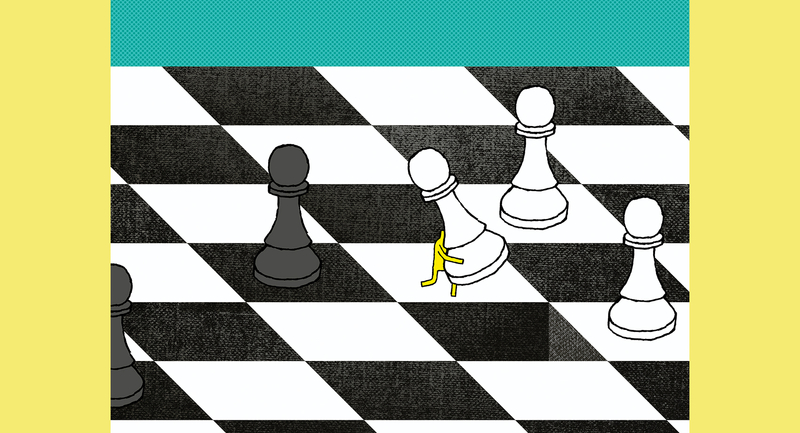Since I wrote my first book on the science of reading in 2015 (Raising Kids Who Read), I’ve spoken with hundreds of teachers about their practice. One instructional strategy has stood out to me as nearly universal through the elementary years, sometimes continuing into middle school: comprehension. I knew comprehension strategies were recommended by the National Reading Panel in 2000, but their omnipresence made me curious: Just how much does teaching comprehension strategies help children make sense of what they read?
It’s an important question. While helping children decode fluently is an essential goal of reading instruction, fluent decoding isn’t the endpoint of reading; students must also understand what they read. My exploration into whether comprehension-strategy instruction truly helps students reach better understanding has led me to three conclusions. First, teaching comprehension strategies does improve children’s understanding of texts. Second, there’s no evidence that practicing these strategies leads to further gains in reading comprehension. But—as a caveat and my third conclusion—that doesn’t mean that practice is unnecessary for mastering any of the necessary skills or ways students might be taught to work with texts. Comprehension strategies are meant to get students only to a rather basic understanding of a text. Reading strategies that hone other abilities, such as analyzing arguments and comparing points of view within the text, lead to deeper or more specialized understandings. And it’s my belief that learners likely benefit from greater practice in these reading activities.
What Are Comprehension Strategies?
Even if students read with full attention and know most of the vocabulary in a passage, many students—even those in high school—understand only part of what they read. Often, the problem can be traced to two related difficulties. The first problem is that students sometimes fail to relate the meaning of sentences and paragraphs to one another. Suppose a student read, “Michael dropped Jessica’s remote-controlled car. She punched him.” The writer certainly intended that the reader not only understand that these two people took these actions, but that the actions are linked—the first action caused the second. Yet weak readers don’t necessarily make the connection. The second problem is that students don’t always notice that they’ve failed to understand the text—and so they don’t try to improve their comprehension by, for example, rereading (Otero & Kintsch, 1992).
Even if students read with full attention and know the vocabulary in a passage, many understand only part of what they read.
Comprehension strategies are typically taught to elementary students in an effort to address these problems. To ensure that students connect the ideas in a text, teachers can give them tasks to perform while they read, like creating a graphic showing the ideas in the text and how they’re related, answering teacher-posed questions, summarizing what they read, or generating their own “who, what, where, when, or why” questions about the text. These tasks can’t be completed unless students relate the ideas in sentences and paragraphs. For the second problem, teachers might simply encourage young readers to practice noticing whether or not they understand what they read.
Strategies like these aren’t taught in isolation; teachers should show students how to use a few of these comprehension strategies so that they have several tools at their disposal.
Do These Strategies Boost Comprehension?
There is ample evidence that teaching students reading-comprehension strategies improves their understanding of texts. By the time the National Reading Panel’s report was published in 2000, the evidence was substantial: The panel concluded that comprehension-strategy instruction was a viable and valuable tool (National Institute of Child Health and Human Development, 2000). In the intervening years, the research base has only grown. In fact, if we look at meta-analytical studies of reading-comprehension strategies, we see how valuable this instruction is for early readers.
In the last 40 years, 12 major meta-analyses of studies centered on reading-comprehension strategies have been conducted (see above). In technical terms, meta-analysis methods are statistical techniques that researchers use to combine individual studies that address the same question but are conducted in different ways. All 12 meta-analyses showed statistically significant effects for reading-comprehension strategies improving students’ comprehension, as measured by the average “effect size” in the individual studies. Effect size is the standard way of measuring the consequences of experiments that use different outcome measures—in this case, measures of student reading comprehension.
All effect sizes reported in these meta-analyses were positive and statistically significantly higher than 0.0, indicating that students do benefit from strategy instruction. Effect sizes ranged from 1.13 to 0.10. Although those numbers may look small, these are sizable effects in terms of typical effect sizes in education studies. Several years ago, Matthew Kraft (2020), a respected education researcher, noted that the conventions as to whether an effect size is large or small were based on findings from other fields. He reviewed 747 studies in education and noted that many things affect children’s learning, so it’s hard to find any one factor that makes a huge difference—magic bullets are few and far between! Based on his review, he suggested that effect sizes of less than 0.05 should be considered small, those of 0.05 to 0.20 considered medium, and any effect size larger than 0.20 considered large.
Only two of the meta-analyses I’m discussing here showed an effect size in the medium range; all others were in the large range, indicating that comprehension-strategy instruction has a major effect on readers’ understanding. Teaching students reading-comprehension strategies clearly seems like time well spent.
The Practice Conundrum
Researchers have also used meta-analysis to determine whether students show an even greater benefit from comprehension-strategy instruction when they practice the strategies more. These 12 major meta-analyses posed that question—and each found the same answer: No. Different studies measured “more instruction” in different ways—number of sessions, number of hours—but the answer was always the same, whether students received only four total hours or several hundred hours per year of strategy instruction (both outliers), or the more typical 10 to 50 hours. There was no evidence that increasing instructional time for comprehension strategies—even by 400 percent!—brought any benefit. This finding is not only important for its practical implications for instruction; it should make us think differently about the nature of reading comprehension.
Do the Strategies Really Teach Skills?
People often talk about reading comprehension as a skill. It’s tempting to think that comprehension-strategy instruction works the way coaching works in skills needed for baseball or golf. If you use poor form on your golf swing, a coach demonstrates the right way to do it. With enough practice, the old habit dies away and the correct swing becomes second nature. Certainly, comprehension-strategy instruction could work comparably: Teachers show children the way good readers read, so that children can practice those methods and make them habits.
Yet there are two reasons why this explanation of how comprehension-strategy instruction works doesn’t fit. First, experienced readers don’t feel like they’re deploying strategies when they read. But this seeming contradiction is easily explained if we liken a reading strategy to training wheels. A good strategy gets a reader to connect ideas in the text, just as training wheels help a beginning cyclist balance. With experience, riders learn to balance without the mini-wheels—and readers learn to connect ideas without using the “create a summary” strategy.
There’s another reason why reading comprehension doesn’t seem like a skill per se. When learning a physical skill like swinging your golf club expertly, you need more practice to make it a habit—but as noted above, practice brings no benefit to reading-comprehension strategy use.
Perhaps strategies don’t teach students to draw inferences about connections between ideas—because students already know how to do that. Rather, strategies show students that relating ideas is important.
However, the idea that strategies are quickly learned but don’t require practice fits well with a different account of why strategy instruction is effective. Perhaps strategies don’t actually teach students to relate ideas in reading passages—to draw inferences about connections between ideas—because students already know how to do that. Rather, comprehension strategies might show students that relating ideas is important. Typically-developing students arrive at their first day of school with rich abilities in oral language comprehension, including connecting sentences by drawing inferences from what they hear. If a typical five-year-old heard, “Michael dropped Jessica’s remote-controlled car. Jessica punched him,” she would readily draw a causal connection between these ideas. Why, then, don’t children draw inferences to connect ideas when they read? Newish readers may figure, “If I understand each sentence, I’m doing what I’m supposed to do.” They could relate ideas to one another, they just don’t yet recognize that it’s important to do so.
By asking students to answer questions, create a summary, or engage in some other research-tested comprehension strategy, we might be nudging them toward recognizing the benefit of coordinating meaning across sentences and paragraphs. In this sense, the benefit is similar to encouraging students to check their work in math; double checking doesn’t make them more capable in math—it makes them apply the math they know more carefully. Likewise, comprehension strategies might teach students to deploy the comprehension processes they have already learned more consistently in their reading.
Other Factors in Reading Development
Everything I’ve said so far might make it sound like reading instruction can just consist of teaching children to decode fluently and teaching a few comprehension strategies—and most students can take it from there to become solid readers. Why, then, do many students still struggle with understanding what they read throughout school?
The Inferences We Make
We know that content knowledge is crucial for comprehension (Cabell & Hwang, 2020), so perhaps student success or failure in comprehension will depend mostly on whether or not a student has the right content knowledge, as Hirsch (2006) has suggested, and comprehension skills play no further role.
But that’s not quite right. There are different types of inferences we draw from the knowledge we have, and they support different types of reading tasks. Some inferences are automatic in oral language and also automatic for experienced readers. People don’t decide that they’re going to make these inferences, the mind just makes them happen. An example is when two sentences refer to the same thing by different names: “Everyone loved the ice cream. The tasty treat disappeared quickly.” You connect the first and second sentences because you automatically recognize that “ice cream” and “tasty treat” refer to the same thing (van den Broek & Kendeou, 2008). A similar process is at work when a reader finds referents for pronouns like “he” or “it” as they read, such as in the sentence, “The box was huge. It would probably be hard to carry.”
People don’t decide that they’re going to make these inferences, the mind just makes them happen.
People also tend to infer causal relationships automatically (Sloman & Lagnado, 2015); that’s why it’s easy to causally relate the sentences about Jessica punching Michael after he dropped her toy. Typically-developing children make these connections automatically as they listen to spoken language, and experienced readers make these connections automatically when reading, though new readers may not. As I’ve noted, comprehension strategies may be effective because they prompt beginning readers to make connections when they read.
Not All Inferences Are Created Equal
The types of connections encouraged by comprehension strategies lead only to a fairly elementary understanding of the text. Students are prompted to find the main idea or identify the basic facts—who did what, where they did it, and why. But educators want students to go on to analyze texts more deeply. They want students to be able to differentiate facts from opinions in what they read. They want readers to analyze arguments and recognize logical fallacies. Students should learn to recognize an author’s point of view and reason about the assumptions that might come with that view, and to understand devices authors use to evoke responses in readers.
Then, too, there are more advanced reading skills that are specific to disciplines. In English class, students learn to understand literary devices and forms; in history class, they learn the importance of sourcing documents and corroborating them; and in science class, precisely reporting experimental methods is paramount.
Most students will have used few of these analytic skills when speaking. So, it stands to reason that students would benefit from having many chances to practice skills like analyzing the arguments made in complex texts, making inferences about an author’s assumptions, etc. after they’ve been made aware of these aspects of strong reading.
The Importance of Deeper Reading Practice
In sum, the existing experimental evidence does not support giving young readers extensive reading-comprehension strategy instruction; students can gain enough benefit from limited experience with the strategies. But that doesn’t mean that all reading instruction requires no practice. Reading-comprehension strategies target one aspect of comprehension—a basic understanding of the facts the author meant to convey. We want our students to understand and be able to analyze what they read far more deeply. And for that, more practice will likely yield better results.
Reflect & Discuss
➛ What might the implications
of the research summarized
here be for how you teach
reading-comprehension
strategies at your school?
➛ For elementary teachers:
Do your students seem to
need guidance in making
inferences or connecting
ideas as they read?
What have you found
helps them do this?
➛ For secondary teachers: What
have you found most helps
guide your students who
struggle in comprehending
what they read?









